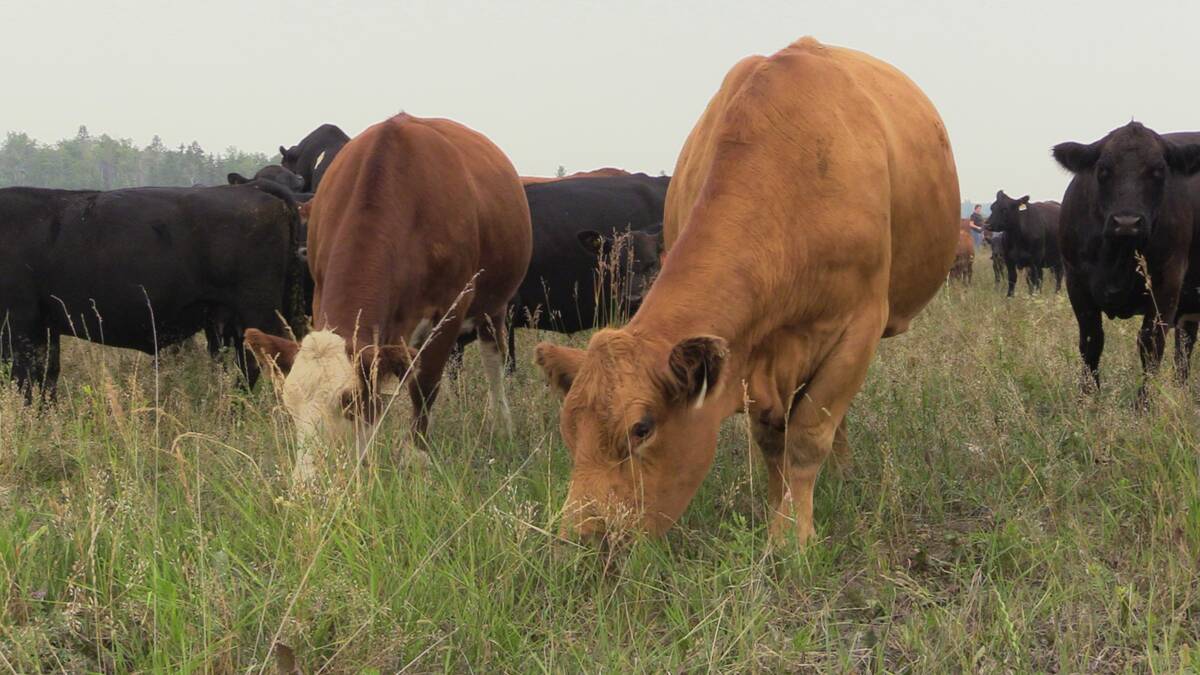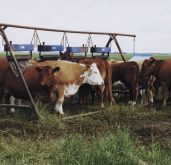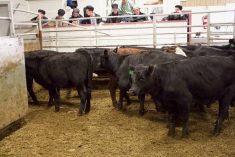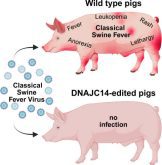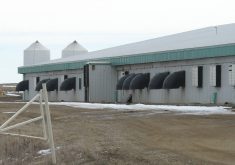Canada has not had an incident of foot-and-mouth disease (FMD) in more than 70 years.
Organizers of a new series of FMD simulations hope to retain that record as more countries fall prey to the viral disease of cattle, swine and sheep.
WHY IT MATTERS: A return of foot-and-mouth disease in Canada could cause the Canadian livestock sector serious economic and trade losses.
Read Also
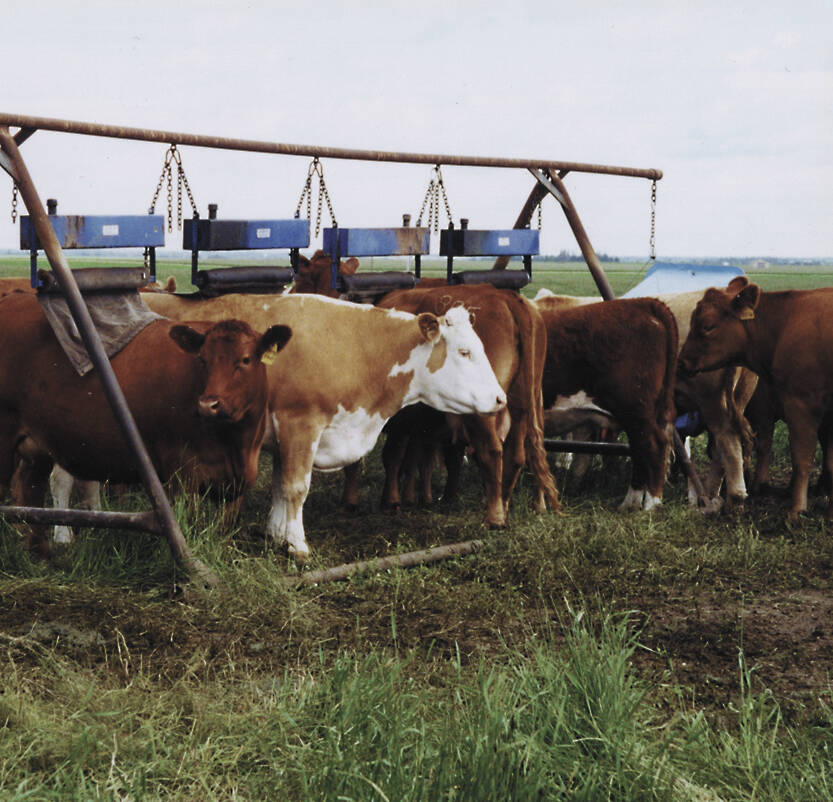
Shifting standards on cattle parasite control
Parasite product resistance has more farmers and veterinarians thinking differently about how to control issues like lice or worms.
The first of up to six “table-top” drills was held in Calgary Nov. 13-14 and featured a hypothetical high-risk FMD case in the United States.
The event was organized by Alberta Beef, the Canadian Cattle Association and the National Cattle Feeders Association under the auspices of Animal Health Canada and the Canadian Food Inspection Agency.
According to a notice from the World Organization for Animal Health, which encourages these drills, the simulations tackle small, defined components of an FMD response, each building on the previous exercise.

The drill was a “discussion-based simulation” used to identify the roles and responsibilities of various individuals and agencies during an animal health event.
“No real animals, samples or field activities were involved,” explained an email from the CFIA.
“Participants, including federal, provincial and industry representatives, worked through a fictional FMD scenario in a learning-focused environment.
“Table-top exercises are standard practice in emergency management. They allow all participants to strengthen co-ordination and test existing plans.”
Preparing for the real thing
The hypothetical scenarios will include movement control challenges, feedlot and processor impacts and cross-jurisdictional decision-making, AHC executive director Cassidy Klima wrote in an email.
“We are identifying vulnerabilities, strengthening communication pathways and demonstrating that response roles are clearly understood,” she said.
The projected economic impact of a small FMD outbreak in Canada of around 50 infected sites is approximately $19.4 billion, Genevieve Toupin, the national veterinary program manager with the CFIA, told Glacier FarmMedia this past February.
“But if we end up with a … large outbreak in areas where the density of susceptible animals is greater, and let’s say we reach 1,500 infected premises, then we reach close to $65 billion,” wrote Klima.
Foot-and-mouth risk
Described by the federal government as a “severe, highly contagious viral disease of cattle, swine and sheep and other cloven-hoofed animals such as goats, deer, and bison,” FMD remains endemic in several regions around the world, with periodic outbreaks occurring in countries that play significant roles in global trade.
“Although Canada does not import high-risk commodities from these regions, their interconnectedness within international trade networks means the risk is never entirely removed,” Klima said.
“Canada remains FMD-free, but the ongoing worldwide presence of the disease means that the possibility of introduction, whether through travel, trade pathways or the global movement of people and animals, can never be considered zero.”
Other jurisdictions considered free of FMD include the United States, Mexico, Central America, Australia, New Zealand and Chile. It was last reported in Canada in 1952 when discovered in Saskatchewan.

The CFIA email confirmed the pathogen’s growing presence throughout the world. It continues to “circulate endemically” across parts of the Middle East and South and Southeast Asia, with “sporadic incursions” occurring in previously FMD-free European countries, some of which have not had incidents in decades.
In 2025, Germany encountered an outbreak for the first time since 1988, while Hungary and Slovakia experienced their first since the early 1970s.
The first drill focused on the critical first 24 hours of a U.S. outbreak, wrote Klima.
“This early-stage practice allowed us to evaluate how information would move, which partners need to be engaged immediately and how quickly crisis communication, surveillance and emergency response plans can be activated.
“The exercise offered valuable insight into the triggers, operational needs and co-ordination points that are essential for a fast and effective response.”
Strengthening defence
Simulation participants also identified strengths and opportunities for improvement in Canada’s current FMD preparedness systems, she said.
Five additional drills will take place through 2027, along with a national table-top exercise.
“Each event will further enhance Canada’s readiness, improve response capacity and build producer and industry confidence that the systems protecting our livestock, trade and food supply are strong and continually improving.”
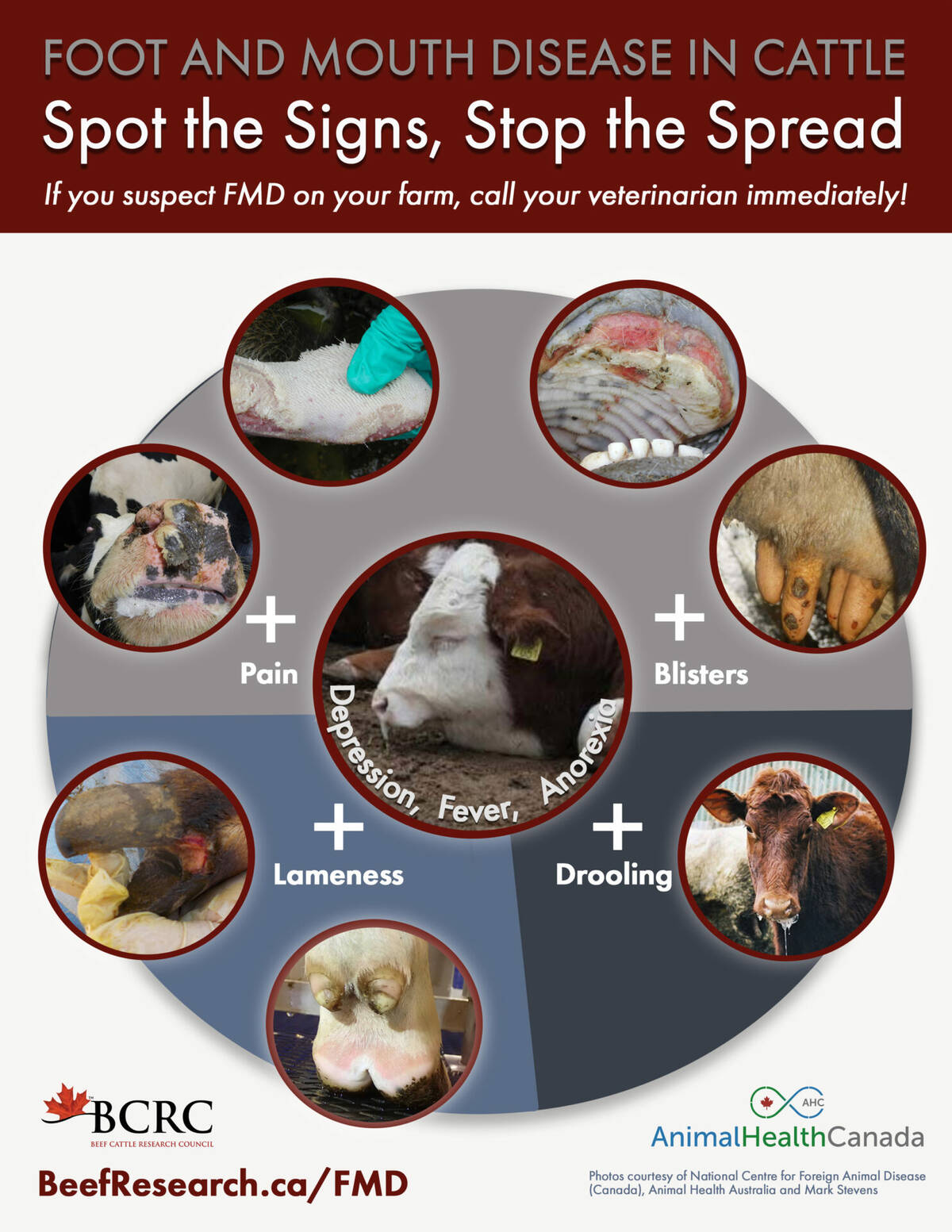
In related FMD news, the federal government awarded two contracts to develop an FMD vaccine bank earlier this year. According to the CFIA, Boehringer Ingelheim Animal Health and Biogenesis Bago SA received contracts to supply the bank with sufficient vaccine and strains to respond to a large outbreak.
This is in addition to Canada’s current access to vaccines through the North American Foot-and-Mouth Disease Vaccine Bank, said the agency.
Glacier FarmMedia reported earlier this year that an FMD vaccine bank was a line item in Canada’s 2023 federal budget. This was in response to industry concerns of over-reliance on U.S. sources for emergency vaccines. — With files from Miranda Leybourne


